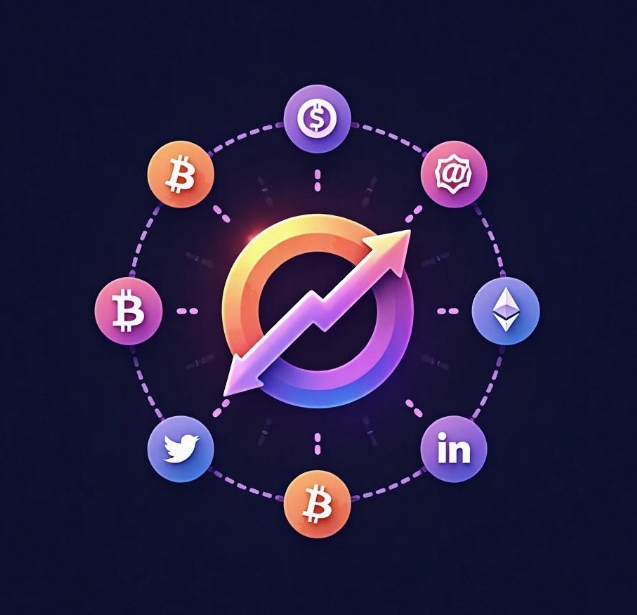How to Design Social Features and Sharing Mechanisms for Mini Programs
- latest articles
- 1.DApp Development & Customization: Merging Diverse Market Needs with User Experience 2.Analysis of the Core Technical System in DApp Project Development 3.How to achieve cross-chain interoperability in Web3 projects? 4.How does the tokenization of points reconstruct the e-commerce ecosystem? 5.How to Set and Track Data Metrics for a Points Mall? 6.What is DApp Development? Core Concepts and Technical Analysis 7.Inventory of commonly used Web3 development tools and usage tips 8.Development of a Distribution System Integrated with Social E-commerce 9.Six Key Steps for Businesses to Build a Points Mall System 10.What is DApp Development? A Comprehensive Guide from Concept to Implementation
- Popular Articles
- 1.Future Trends and Technology Predictions for APP Development in 2025 2.Analysis of the DeFi Ecosystem: How Developers Can Participate in Decentralized Finance Innovation 3.From Zero to One: How PI Mall Revolutionizes the Traditional E-commerce Model 4.DAPP Development | Best Practices for Professional Customization and Rapid Launch 5.Recommended by the Web3 developer community: the most noteworthy forums and resources 6.How to Develop a Successful Douyin Mini Program: Technical Architecture and Best Practices 7.From Cloud Computing to Computing Power Leasing: Building a Flexible and Scalable Computing Resource Platform 8.Shared Bike System APP: The Convenient Choice in the Era of Smart Travel 9.How to Create a Successful Dating App: From Needs Analysis to User Experience Design 10.From Design to Development: The Complete Process of Bringing an APP Idea to Life
With the rapid development of mobile internet, mini-programs have become a focus of attention for an increasing number of enterprises and developers. As a lightweight application form, mini-programs not only provide convenient services but also offer a good user experience, especially in terms of social features and sharing mechanisms, which provide rich interactive possibilities. This article will explore how to design the social features and sharing mechanisms of mini-programs to enhance user retention, increase brand exposure, and drive user growth.
I. The Necessity of Social Features in Mini-Programs
The design of social features can help mini-programs break through the limitations of traditional application scenarios and establish interactive connections between users. With the popularity of social networks, users are increasingly inclined to share their daily lives and experiences, especially showcasing their behaviors on social platforms. By integrating social features, mini-programs can achieve rapid information dissemination and widespread content diffusion, thereby increasing their exposure.
Enhancing User Retention: Social features allow users to participate in more interactions, increasing their reliance on and frequency of using the mini-program. For example, users can interact with friends through the mini-program or participate in social activities, further enhancing their sense of belonging and engagement.
Increasing Brand Exposure: Through the design of sharing mechanisms, users are not only using the mini-program but can also share its content and activities with their social circles or platforms, creating a secondary dissemination effect and attracting more potential users.
Promoting Social Dissemination: Driven by social platforms, users' social behaviors have become a key driving force for the development of mini-programs. Interactions and sharing among users not only boost activity but also encourage more people to join and use the mini-program, forming a virtuous cycle.
II. Design Strategies for Social Features
When designing social features for mini-programs, multiple dimensions need to be considered to ensure that the social functions are both engaging and practical. Below are several common and effective design strategies for social features:
Building a Friend System
The friend system is a core component of social features. Through the built-in friend relationship management system in the mini-program, users can connect with others, engage in private conversations, interactions, and collaborations. The friend system typically includes the following key functions:
Friend Adding and Inviting: Users can add friends through various methods such as phone numbers, QR codes, or social platforms, and can also invite others to use the mini-program.
Friend Interactions: Includes various forms of interaction such as text, images, videos, and voice messages, allowing users to communicate and interact with friends within the mini-program.
Dynamic Sharing: Users can post updates, share their statuses, or interact with other friends, similar to the "Moments" feature on social platforms, attracting other users to join the interaction.
Social Tasks and Challenges
To stimulate user participation, social tasks or challenges can be designed. These tasks often require users to complete them with friends or invite friends to participate through sharing. For example:
Group Buying Activities: Users can invite friends to form groups for purchasing goods and enjoy discounted prices, attracting more participants through social means.
Check-in Challenges: Set daily or weekly check-in tasks where users can participate in challenges with friends, creating a motivating and competitive atmosphere.
Leaderboard Function: To add fun, a leaderboard mechanism can be introduced, allowing users to compete with friends on task completion speed or quality, stimulating social interaction.
Social Games and Interactive Features
Incorporating game elements into the social design of mini-programs can effectively increase user activity and interactivity. For example:
Virtual Gift Giving: Users can purchase virtual gifts within the mini-program to send to friends as a gesture of gratitude or blessing. This interaction can strengthen relationships and emotional bonds between users.
Social Mini-Games: Design simple and lighthearted social games that users can participate in with friends. Examples include puzzles, quizzes, and other small games that provide entertainment while enhancing the mini-program's interactivity through social mechanisms.
Social Content Sharing and Dissemination
The social features of mini-programs not only provide interaction for users but also help them share their activities and content within the mini-program with others. Content sharing can be done in various ways, such as through social platforms, group chats, or direct link sharing. Below are several effective design methods for social content sharing:
Direct Sharing to Social Platforms: Integrate sharing functions for social platforms like WeChat, QQ, and Weibo within the mini-program, allowing users to easily share content to their social circles.
One-Click Sharing: Design a "one-click sharing" button that enables users to quickly share a specific page or activity from the mini-program with others, maximizing sharing efficiency and increasing the likelihood of dissemination.
Sharing Reward Mechanism: Design a reward mechanism to encourage users to share the mini-program in exchange for points, coupons, or other benefits. Through incentive design, users are motivated to actively share, expanding the mini-program's reach.
Social Content Recommendations
By analyzing user behavior data and interest preferences, mini-programs can recommend relevant social content to users. Such recommendations can enhance user engagement and interactivity. For example:
Interest-Based Recommendations: Recommend relevant social activities, friend updates, or popular content based on users' historical behaviors and social interactions to increase their participation.
Location-Based Recommendations: Use geographic location data to recommend nearby social activities or related social groups to users, enhancing the mini-program's social functionality.
III. Key Points in Designing Sharing Mechanisms
The sharing mechanism is an indispensable part of the social features in mini-programs. Designing an effective sharing mechanism not only improves the dissemination efficiency of the mini-program but also promotes user interaction and participation. Below are some key points to consider when designing sharing mechanisms:
Simple Sharing Process
The sharing process should be simple and quick, allowing users to easily share content with friends or social platforms at any time while using the mini-program. Avoid complex steps to simplify the sharing process and enhance the user's sharing experience.
Diverse Sharing Channels
Providing multiple sharing channels allows users to choose the most suitable method based on their habits. For example, in addition to direct link sharing, features like QR codes, social platform sharing, and朋友圈 sharing can be designed, enabling users to share in different platforms and scenarios.
Personalized Sharing Content
Shared content should be personalized, pushing content that aligns with users' behaviors and interests. For example, users can share tasks they have completed, rewards they have earned, or activities they have participated in, making the shared content more relevant to their actual needs and interests.
Social Feedback After Sharing
After users share content, they should be able to see feedback from others on their shared content. This can be achieved through comments, likes, and shares, further enhancing interaction between users and promoting the formation of social circles.
Sharing Reward Mechanism
By designing a sharing reward mechanism, users are encouraged to actively share the mini-program's content. For example, users can earn points, coupons, discounts, or increase their social level and privileges through sharing. This mechanism not only increases the mini-program's exposure but also motivates user participation.
IV. Summary
Social features and sharing mechanisms are crucial factors for the success of mini-programs. By carefully designing social features to enhance interaction and connections between users, user retention can be improved, and the mini-program's activity level can be increased. A well-designed sharing mechanism, on the other hand, can help the mini-program rapidly expand its user base, bringing more exposure and growth. In summary, the social design of mini-programs should not only focus on improving the user experience but also fully leverage the dissemination advantages of social platforms to create mini-programs with powerful social functions and sharing capabilities, enabling them to stand out in the competitive market.
-

How to Increase User Stickiness and Activity Through Mini Program Development
With the development of the internet and mobile internet, mini-programs, as an e···
-

How can mini-program development assist in corporate marketing and e-commerce transformation?
In today's rapidly evolving mobile internet landscape, corporate marketing and e···
-

Offline Functionality Design and Data Synchronization in Mini-Program Development
With the rapid development of mobile internet, mini-programs, as a lightweight a···

 Blockchain
Blockchain












